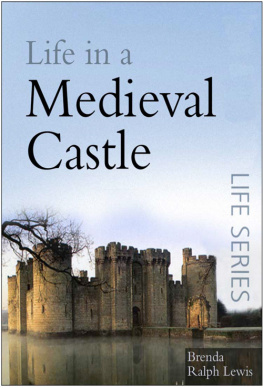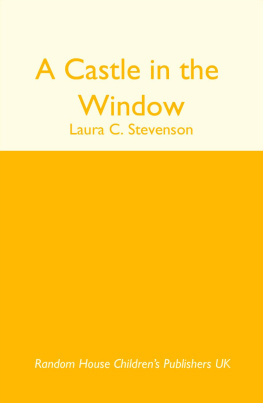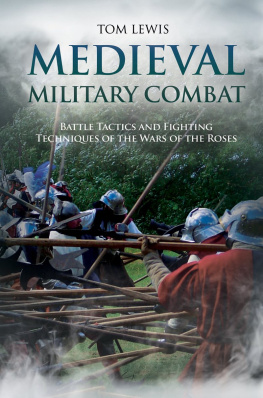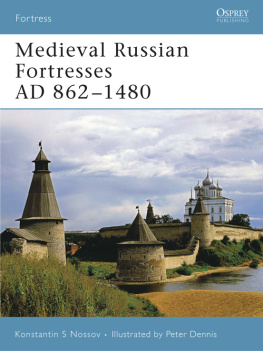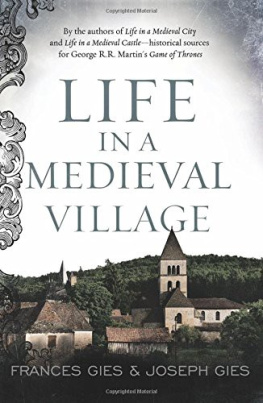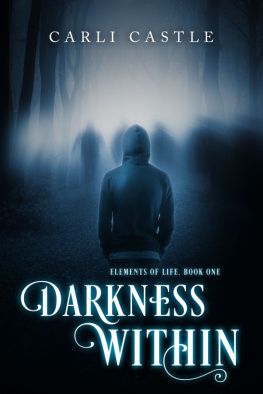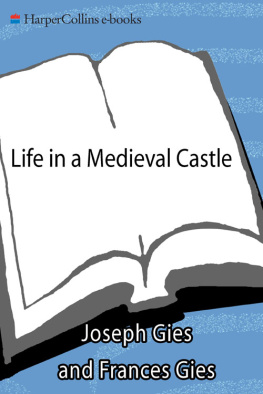Brenda Ralph Lewis - Life in a Medieval Castle
Here you can read online Brenda Ralph Lewis - Life in a Medieval Castle full text of the book (entire story) in english for free. Download pdf and epub, get meaning, cover and reviews about this ebook. year: 2011, publisher: The History Press, genre: Non-fiction. Description of the work, (preface) as well as reviews are available. Best literature library LitArk.com created for fans of good reading and offers a wide selection of genres:
Romance novel
Science fiction
Adventure
Detective
Science
History
Home and family
Prose
Art
Politics
Computer
Non-fiction
Religion
Business
Children
Humor
Choose a favorite category and find really read worthwhile books. Enjoy immersion in the world of imagination, feel the emotions of the characters or learn something new for yourself, make an fascinating discovery.
- Book:Life in a Medieval Castle
- Author:
- Publisher:The History Press
- Genre:
- Year:2011
- Rating:3 / 5
- Favourites:Add to favourites
- Your mark:
- 60
- 1
- 2
- 3
- 4
- 5
Life in a Medieval Castle: summary, description and annotation
We offer to read an annotation, description, summary or preface (depends on what the author of the book "Life in a Medieval Castle" wrote himself). If you haven't found the necessary information about the book — write in the comments, we will try to find it.
Life in a Medieval Castle — read online for free the complete book (whole text) full work
Below is the text of the book, divided by pages. System saving the place of the last page read, allows you to conveniently read the book "Life in a Medieval Castle" online for free, without having to search again every time where you left off. Put a bookmark, and you can go to the page where you finished reading at any time.
Font size:
Interval:
Bookmark:

First published in 2007
The History Press
The Mill, Brimscombe Port
Stroud, Gloucestershire, GL 5 2 QG
www.thehistorypress.co.uk
This ebook edition first published in 2011
All rights reserved
Brenda Ralph Lewis, 2007, 2011
This ebook is copyright material and must not be copied, reproduced, transferred, distributed, leased, licensed or publicly performed or used in any way except as specifically permitted in writing by the publishers, as allowed under the terms and conditions under which it was purchased or as strictly permitted by applicable copyright law. Any unauthorised distribution or use of this text may be a direct infringement of the authors and publishers rights, and those responsible may be liable in law accordingly.
Brenda Ralph Lewis has asserted the moral right to be identified as the author of this work.
EPUB ISBN 978 0 7524 7057 3
MOBI ISBN 978 0 7524 7058 0
Original typesetting by The History Press
T he medieval world was a military society. It had to be. In around AD 476, the Roman Empire finally fell before concerted barbarian onslaughts, leading to an era of near perpetual violence, invasion and instability. Marauding tribes Huns, Goths, Vandals spread terror across great swathes of Europe. This was no brief encounter. Even before the Romans abandoned their imperial province of Britannia in around AD 426, its inhabitants were receiving the destructive attentions of Anglo-Saxons from Germany and Denmark. Raiders were still coming three, four and five centuries later, as the Vikings crossed the North Sea from Scandinavia first to raid along the east coast of England, later to displace the established population and settle their territory.
Wherever they went and whoever they were, the attackers left a trail of disaster and death behind them. They ravaged settlements, villages and towns. They sacked monasteries and churches where tempting treasure could be found. Murder, mayhem and pillage became the currency of the time, and survival was at a premium. Early victims like the Britons living in Scarborough, which was raided by the Anglo-Saxons in AD 409 were virtually helpless before this storm of brutal aggression. In time, though, the response that developed was characterised by self-defence of ever-increasing power and ingenuity.
The earliest defences comprised huge earthworks, timber-built forts, sometimes incorporating stonework, or motte and bailey castles. The motte and bailey, the first of which was built on the River Loire in France around AD 990, was a mound, sometimes with a wooden tower, surrounded by a moat and topped by a wooden palisade. This was primitive compared with the more romantic, yet at the same time much more daunting, medieval castle, a vast, complex stone-built structure with walls several feet thick, heavily fortified towers and a drawbridge spanning a deep moat.
This mighty fortress developed in the eleventh and twelfth centuries, but despite its fearsome aspect and the chances it offered for tenacious defence, its purpose was no longer solely military, but political and social as well. Gradually, over time, the nomadic raiders who once lived in the saddle, moving from one scene of pillage and slaughter to the next, settled down into more permanent communities. Now, they lived in towns, villages or hamlets, and became farmers, woodsmen or fishermen.
This did not mean a peaceful or even civilised society. Europe was still a dangerous place, still at the mercy of outlaws, brigands and troublemakers. In this context, the castle acquired a fresh function for the ruling elite, as a means of control over their neighbourhood and its inhabitants. It became a forbidding presence looming over the landscape, and acted as a warning to potential wrongdoers. It was also an unmistakable statement of wealth and power and stood as a sign that the local lord could be disobeyed or challenged only at great personal risk.
The Normans who constructed the first substantial castles in Britain after their invasion of 1066 certainly used them as a deterrent to anyone minded to resist their rule. The punitive nature of the Norman resolve to be absolute masters in their newly conquered territory was demonstrated in the north of England where their response to rebellion in 106970 was savage in the extreme. They devastated the region, set fire to crops, killed cattle, burned homes, slaughtered the inhabitants, and smashed the farming implements that might have enabled the survivors to remake some sort of life for themselves.
Fortunately, the depredations in the north of England were not an everyday event. But it came to typify just how far King William was willing to go to assert his authority. The dread lesson sank deep into the English consciousness. Afterwards, even a glimpse of a Norman castle across a field or rising above the horizon or the trees in the forest was a stern reminder of the price disobedience exacted and might exact again.
Ironically, this grim symbol of strength and retribution also suggested a certain weakness in the feudal system by which the Normans and their Plantagenet successors ruled in England. Feudalism was a pyramid arrangement, with the king at its apex. His magnates and the tenants and labourers on their estates occupied the ranks below and each owed fealty and obedience to those who belonged to the rank above. Although this gave the appearance of binding society tightly together through interlocking duties and obligations, the system was essentially decentralised.
Decentralisation was not normally a problem where a king, such as William I, exercised firm control over his realm; but it was a recipe for trouble where a king was too weak, too lazy or too preoccupied elsewhere. This last was the case with several Norman and Plantagenet monarchs who spent a lot of time out of England, in Normandy, Aquitaine, Anjou, Maine or any other of their many possessions in what is now modern France. In this situation, ambitious magnates acquired too much independence to do as they pleased. What they often pleased to do was to use their private armies to attack their neighbours, purloin their lands and their castles and sometimes their entire estates.
In this situation, the features of the classic medieval castle could not afford to derive from architectural fashion or even to reflect the creativity of its designers. Everything about a castle had to serve some purpose of defence for a garrison tasked with fighting off would-be attackers and protecting the magnate and his family and the tenants and workers who fled within its walls for safety in time of war.
For example, the roofs at the top of castle towers were rounded and slanted so as to deflect missiles flung by siege machines. The slits in the walls that served as windows were to protect the archers stationed behind them, while they, by contrast, could fire at enemies with impunity. The drawbridge that spanned the castle moat and comprised the main entrance was hinged at one end to allow it to be drawn up and placed flush against the walls to prevent enemies getting in. This and other gateways could be blocked by a heavy metal grating, the portcullis. Other entrances could be hidden by cunning stonework design and remain unknown to everyone except the castles inhabitants. Enemies who managed to get past these devices and penetrate the castle would find themselves confronted with steeply winding spiral staircases where the advantage was with the defender: he would be striking downwards with sword or spear at a foe fighting upwards while attempting to climb the stairs and avoid being unbalanced in the process.
Font size:
Interval:
Bookmark:
Similar books «Life in a Medieval Castle»
Look at similar books to Life in a Medieval Castle. We have selected literature similar in name and meaning in the hope of providing readers with more options to find new, interesting, not yet read works.
Discussion, reviews of the book Life in a Medieval Castle and just readers' own opinions. Leave your comments, write what you think about the work, its meaning or the main characters. Specify what exactly you liked and what you didn't like, and why you think so.

